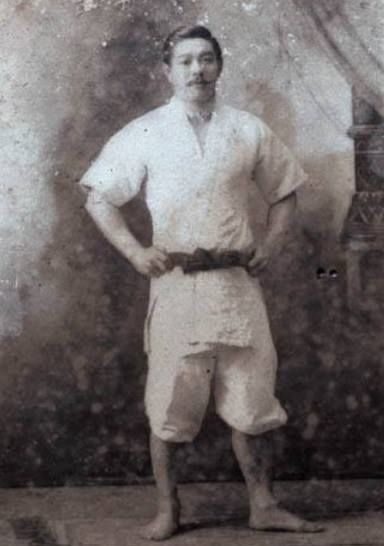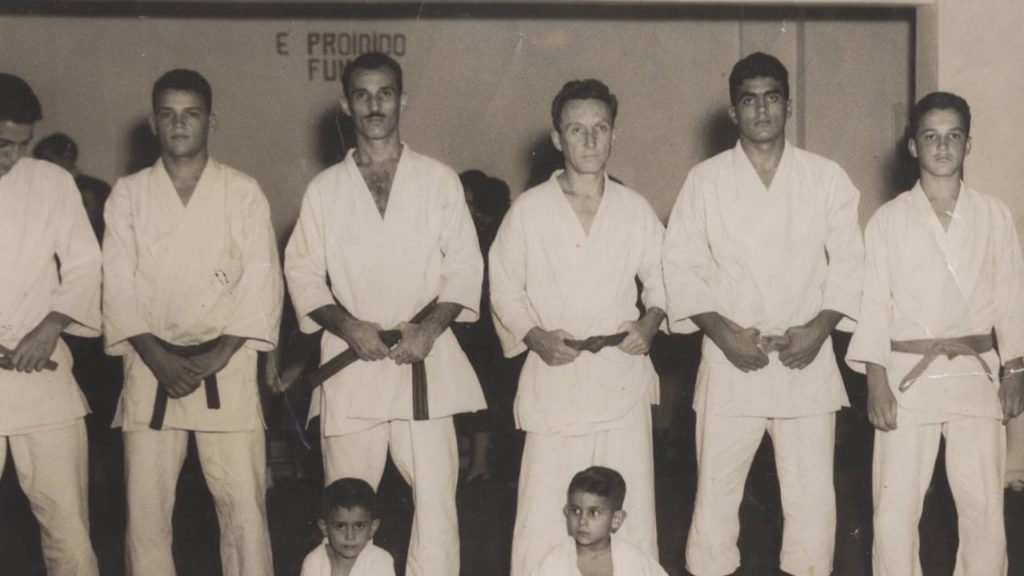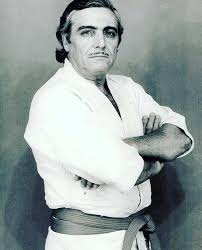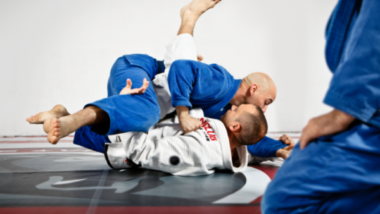What is Jiu-Jitsu?
Jiu-jitsu (Jujutsu or Ju-Jitsu) was used during the time of the Samurai in Japan. It was a form of close combat self-defense used against armored warriors. These techniques consist of pins, throws, join locks and the use of a knife.
What is Brazilian Jiu-Jitsu?
Brazilian Jiu-Jitsu was the adaptation of Jiu-Jitsu by the Gracie brothers. The Brazilians made it their own in particular with the addition of ground fighting techniques such as fighting from the guard position.
Key Figures in the History Who Shaped Jiu-Jitsu
Jigoro Kano

Jigoro Kano was the founder of Judo or “the gentle way” who basically comprised and saved jiu-jitsu from extinction when Japan became westernized. The days of the samurai was over and so there was not a need for jiu-jitsu but Jigoro Kano learned and sought out teachers of the art. At the time Judo and Jiu-Jitsu were used interchangeably. There were more emphasis on throws and locks than the modern day Brazilian Jiu-Jitsu of ground fighting. Judo became Japan’s international sport.
Sada Miyako
Sada Miyako was the first to bring Jiu-Jitsu to Brazil. He performed matches in circus. He lost to a well-known Capoeira fighter. But the wave of Jiu-Jitsu did not catch on.
Mitsuyo Maeda

Mitsuyo Maeda or Conde Koma or “Count Combat” was a prizefighter who traveled internationally to spread Judo or Jiu-Jitsu in many countries. He was one of Jigoro Kano’s top students. Maeda eventually settled in Brazil where he started teaching Jiu-Jitsu to the public. He taught Carlos Gracie for three years. At the time, Maeda did not use the term Judo so the art was known as Jiu-Jitsu in Brazil. Also Maeda did not use any belt ranking structure – one would assume he did not try to follow the Kano lineage when he started his Jiu-Jitsu school. Maeda also knows how to fight without a kimino or gi which was commonly worn during practice. Without Maeda, Jiu-Jitsu would not have a strong foundation in Brazil.
The Gracie Brothers

There were five Gracie brothers who practiced Jiu-Jitsu. Carlos Gracie as mentioned above handled the business side while Helio Gracie fought and challenge many fighters from boxers, wrestlers, to capoeira often winning their matches. The Gracie brothers also challenged other Japanese Jiu-Jitsu fighters (there were many Japanese immigrants to Brazil) mostly ending in draws. The Japanese Jiu-Jitsu fighters would have the upper hand when it comes to throwing the Brazilian Gracie brothers but the Gracies adapted to ground fighting. The Gracies invented “the Guard.” This is where Brazilian Jiu-Jitsu became drastically different than Japanese Judo/Jiu-Jitsu with its emphasis on ground fighting. Brazilian Jiu-Jitsu became Brazil’s international sport. This is the popular Gracie family name you hear often in modern day.
Masahiko Kimura

Masahiko Kimura also practiced under Jigoro Kano’s lineage. He was one of top fighters and immigrants to Brazil. Helio Gracie had a determination to challenge the best fighters so he sought out to face Kimura. Helio had to face a disciple of Kimura, Yukio Kato before he was allowed to fight Kimura. After winning his bout with Yukio Helio versus Kimura was a widely publicized Jiu-Jitsu event. Kimura won with a joint arm lock (called the “Kimura”) against Helio. Helio retired after his fight with Kimura. The significance of this story is this matched increased the popularity of Jiu-Jitsu and where the joint lock name “Kimura” originated.
Oswoldo Fadda

Oswoldo Fadda was a student who practiced under Mitsuyo Maeda (Japanese who taught Jiu-Jitsu in Brazil). Fadda opened his own Jiu-Jitsu school which became a rival school against the Gracies. Fadda stepped up to the challenge against the Gracies. Although it was reportedly a draw – some say Fadda’s students were decisively the victor. His students were specialized in the straight ankle joint lock. Fadda is worth mentioning because the Gracies were not the only prominent Jiu-Jitsu school around. The Gracies did however had a remarkable public relation and business marketing display of its brand thanks to Carlos Gracie and Helio Gracie.
Conclusion
I find it fascinating that the founder of Judo, Jigoro Kano adapted Jiu-Jitsu from Samurai fighting to civilian-life fighting and how he was frail and weak but made the art work for him. This shift was also displayed by Helio Gracie who was also weak and frail yet he was very deadly in the guard or ground fighting. Both key figures were weak and frail but adapted and revolutionized Jiu-Jitsu for better.
That is one thing you will notice with Brazilian Jiu-Jitsu. If you practice long enough you will not fear an opponent who’s stronger or heavier than because you have good technical skills.
In a similar light Wing Chug was invented by a Chinese nun. What true warriors who never gave up but turn a “disadvantage” to an advantage.
Ossu!
Resources:
For an awesome YouTube video based on the highlights above check out: Part 1 and Part 2 of The History of Jiu-Jitsu from LateNightStories.


